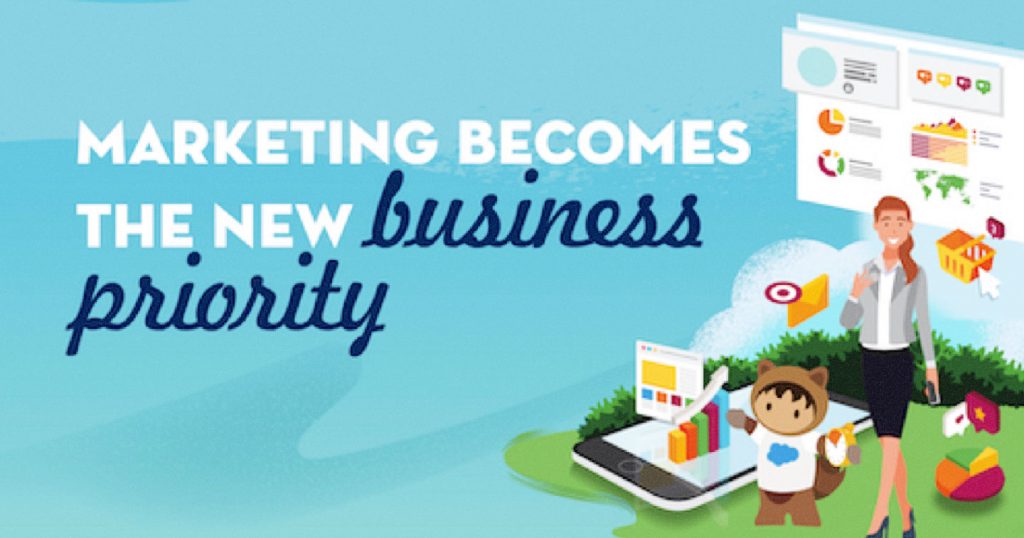ASEAN– Released in May 2020, the sixth edition of the State of Marketing report presents the insights of nearly 7,000 marketing leaders across the globe. The research highlights the strategic priorities, challenges, and technologies that are transforming the profession. These are especially important to consider as businesses navigate from crisis mode to back-to-work to growth.

The report revealed that marketers, particularly across the ASEAN region, have recognised the need for a repositioning of their brand messaging. Messaging has to align with a relentless, company-wide focus on customer experience.
In fact, marketing today is no longer about a linear customer journey. Brands must evolve to provide a seamless customer experience across all interaction touchpoints. What are the new marketing priorities?
Now, more than ever, marketing needs to be a real-time and always-on experience. Therefore, marketers will need different strategies, skill sets, and technologies to win the battle of customer attention and loyalty.
The State of Marketing report revealed three clear factors that affect the roles of marketers. These are all related to the fact that customers now expect, just as I did, a one-on-one, personalised connection in real time.
- Digital speed
How do we use technology to communicate in real-time with our customers, and to pivot with great speed to different messages in different channels? This is not just about having the right technology in place. It’s also about having the right, streamlined processes. None of these are new. But these demands are far more urgent and important because of the pace with which behaviours of consumers and high-performing businesses are shifting is unprecedented. That is why engaging customers in real time is the second most important priority in 2020 for marketers worldwide, according to the State of Marketing report. - Brand message
Marketing is no longer just about supporting sales. It is instead about nurturing and demonstrating caring relationships with customers and prospects. This points to a change in marketing content. It’s no longer okay to hit a broad group of potential customers with a credit card campaign, for instance, when some are likely having difficulty meeting their mortgage responsibilities. In fact, more than 50 percent of customers are annoyed when they’re served an ad for something they’ve already bought. Marketers have reported a 186 percent increase in AI adoption since 2018, helping ensure every communication is individualised and empathetic. - Clear collaboration
A customer’s relationship is with the organisation, not with an individual or department. They will never feel that a positive relationship has developed unless the entire organisation is consistent in its values and behaviors. Supporting this fact, 69 percent of customers say they expect connected experiences. Therefore, there must be clear and cross-functional team collaboration, centred around how to best serve the needs of the customer. Marketers can no longer work in silos. They have to interact with people from service, sales, and information technology. All these departments have a stake in how customers experience a brand’s product or service.

Marketing success amidst the new business environment
At the recent Salesforce Live: Asia event, trailblazers were invited to share how they navigate today’s new business environment.
One Trailblazer that managed to transform its businesses successfully over the past few months is Bluebird Group, an Indonesian transport company.
Bluebird shifted gears during the pandemic to offer a logistics delivery service for businesses and consumers, as well as their regular taxi service. They were effectively providing a service to meet new demand, given their customers were unable to move freely around themselves. Bluebird also adjusted its marketing in a timely and sensitive manner, in order to align with evolving customer preferences and behaviours. For example, it needed to communicate how its business operations meet the highest hygiene standards.
Bluebird’s transformation required buy-in across the entire organisation, but was driven by marketing. It is an example of the new, centralised, and urgent role for marketers to play in developing and communicating brand messages. This shift in marketing responsibilities and priorities is mirrored across all industries in ASEAN territories.
Looking ahead
In the past, marketers didn’t have a cohesive understanding of a customer’s full journey. COVID-19 caused a major shift in the standards of customer engagement. Trust, transparency, and accountability are more business critical than ever. The longevity of a business will rely far more heavily on cross-departmental collaboration and a deep appreciation of customer lifetime value. Marketers have a unique opportunity to turn trusted customer relationships into business value. To be at the top of the marketing game in 2020, marketers need to be data-savvy collaborators who can foster the connected journeys that customers expect.
The State of Marketing report examines the importance of customer experience and the continuous pursuit of marketing innovation. For more key report findings, download the Salesforce State of Marketing report for more insights.











